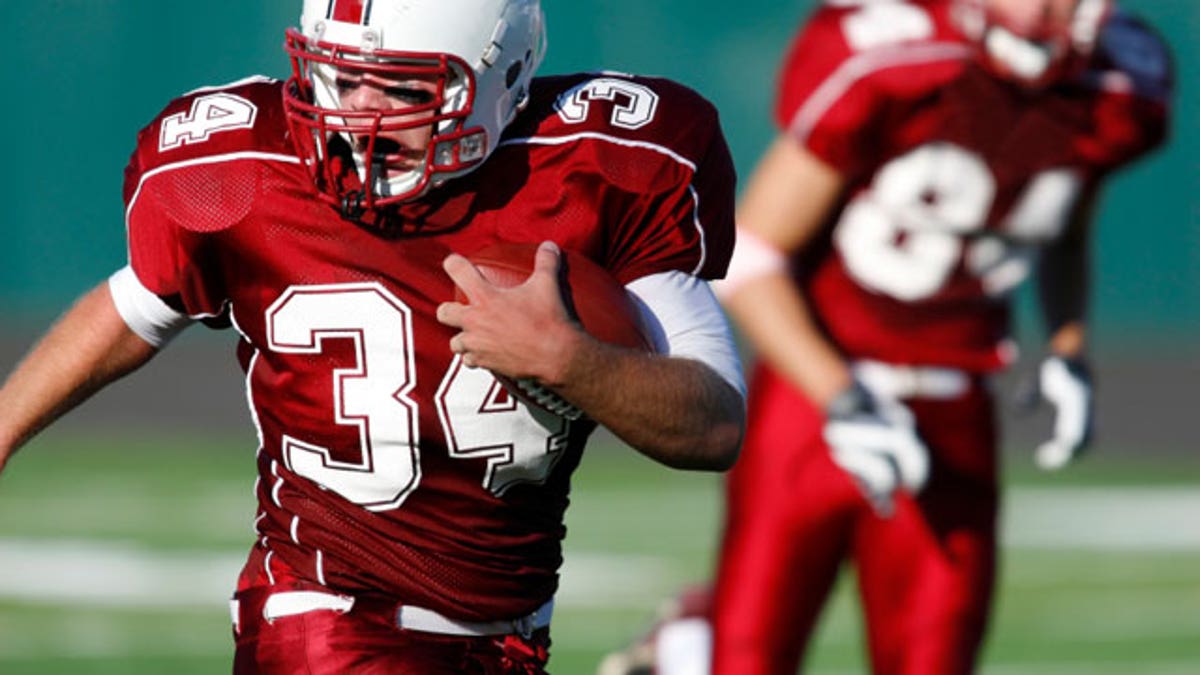
(iStock)
College football players suffer knee injuries about 40 percent more often when playing on an artificial surface compared to when they're playing on grass, according to a new study.
"We thought it was interesting because many universities are switching to the new generation artificial turf," said Dr. Jason Dragoo, the study's lead author and a professor at Stanford University School of Medicine.
Dragoo said turf provides a more consistent playing field, and is expected to deliver better performance, but it has not been considered any less safe than grass.
"This doesn't say there's conclusive evidence that turf increases the injury rate, but maybe we can say it's not as safe as we thought it was," Dragoo told Reuters Health.
The findings, published in The American Journal of Sports Medicine, were part of a study looking back on knee injuries among college football players to see when they might be most vulnerable to getting hurt.
Dragoo and his colleagues note in their report that football is the leading cause of sports-related injuries in the U.S.
"The bottom line is anything we can get from these statistics will help us understand why players are getting these injuries and what we can do about it," Dragoo said.
The research team examined cases of tears to the anterior cruciate ligament (ACL) in the knee that were reported to the National Collegiate Athletic Association (NCAA) Injury Surveillance System.
The surveillance system includes about 10 percent of schools in the NCAA, and the study period spanned the 2004-2009 playing seasons.
Dragoo's group found 318 injuries to the ACL during those seasons, which translated to a rate of 14 injuries for every 100,000 "exposures." Each time a player practiced, scrimmaged or played a game was counted as one exposure.
ACL injuries were 10 times more common during games than during practices, and close to five times as common during scrimmages than during regular practice.
Athletes were also 1.39 times as likely to be injured when playing on modern artificial turf as they were when playing on grass.
The newer types of artificial playing fields are called infill surfaces. They have a layer of synthetic grass over a field of rubberized pellets called fill.
There were close to 18 injuries for every 100,000 exposures among athletes playing on infill surfaces, compared to 14 injuries for every 100,000 practices or games that took place on artificial turf without fill or on natural grass.
Dr. James Bradley, the chief orthopedic surgeon for the Pittsburgh Steelers and a clinical professor at the University of Pittsburgh, said the findings support what's also been observed in the National Football League.
"What the problem is, we think, is the shoe-surface interface," Bradley told Reuters Health.
Players are able to get a better grip on turf than on grass -- perhaps too good a grip, Dragoo explained.
"So if you are in the wrong position, because your leg doesn't give way as it does on grass, it can distribute that force to your knee and cause an injury," he said.
Bradley said the NFL is working with shoe makers to try to design footwear that can mimic the grip that players get on grass.
"You can change the molding patterns on the shoe to decrease" friction, Bradley said.
Dragoo said specialized footwear would help, along with ACL injury prevention training.
"The way that you move and the way that you pivot and change direction will determine your risk of having an ACL tear. So even if we do have increased risk on the turf with the shoes, we can modify that by making sure that the athletes are moving right," Dragoo said.
